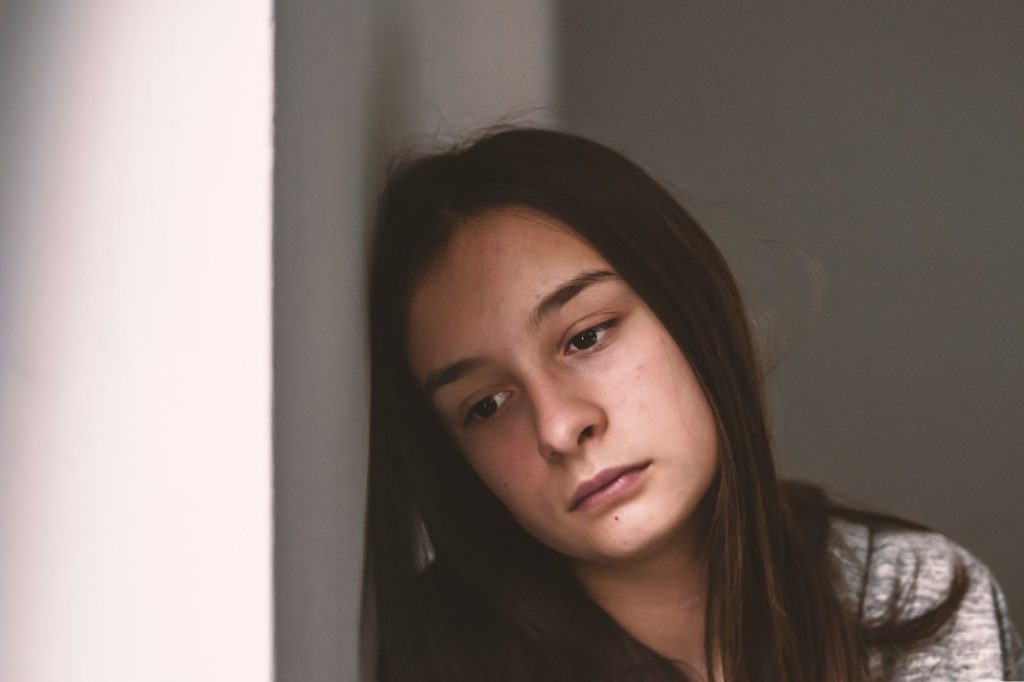Is your happy-go-lucky teen suddenly avoiding situations they once found enjoyable, such as hanging out with friends, going to movies, or joining in on family activities outside of the home? Have you noticed your teen getting agitated or upset while standing in the grocery store line, or missing more school days than usual even though they seem healthy overall?
If you answered yes to any of these questions, what you may be seeing are signs of a mental health condition known as agoraphobia.
What Is Agoraphobia?
Agoraphobia, which means the fear of being in public spaces, is a term used to describe the intense fear a person experiences when exposed to a threatening situation, along with the tendency to avoid situations or environments the person perceives as threatening. Often this fear is directed toward public places (or being away from home) because the person is afraid they may be trapped or unable to escape.
Often, individuals with agoraphobia are afraid they might have a panic attack or experience intense anxiety and will be trapped. For example, they may be afraid that they will experience a panic attack at a concert or on the bus and that they will be unable to get out of the crowd or off the bus to calm down. And so they avoid things like bus rides, movies, and concerts because the fear has grown so strong.
Symptoms of Agoraphobia
The symptoms of agoraphobia, according to the “Merck Manual,” are characterized by intense anxiety, either before a particular activity or during the activity, for a period of at least six months. The child will likely try to avoid being in situations that they fear, and that can impact their ability to go to school and/or work, as well as other areas of functioning.
So, if you notice that your teen now avoids leaving home to spend time with friends (something they used to do frequently) and avoids participating in any activities that require them to be away from home (something that they used to look forward to), your teen may be showing symptoms of agoraphobia. One of the most common ways agoraphobia shows up in children and adolescents, according to a report from the Anxiety and Depression Association of America (ADAA), is refusing to go to school.
Common activities that individuals with agoraphobia fear, according to the “Merck Manual,” include:
- Using public transportation
- Being in open spaces (such as a large city square or field)
- Being in enclosed spaces (such as a movie theater)
- Standing in line or being in a crowd
- Being outside the home alone
Clients that I have worked with who experience agoraphobia are often afraid of dark or small enclosed spaces. For example, several clients have shared with me that they are afraid to drive because they fear having a panic attack while being stuck in traffic. They will go to great lengths to avoid driving, which can severely limit their daily life. Others have shared that they are afraid of having a panic attack in a movie theater, even though it has never happened, and so they avoid going to the movies even if it means missing out on a movie night with friends.
According to the ADAA, children and adolescents who experience agoraphobia may have already had a panic attack in the situation they are trying to avoid. They avoid that situation now to avoid a repeat of that frightening experience.
A panic attack is characterized by intense anxiety and may include these symptoms:
- Intense fearfulness
- Racing heart
- Feeling dizzy or lightheaded
- Experiencing shortness of breath
- Trembling
- Sense of unreality
- Fear of dying, losing control, or going crazy
How Common Is Agoraphobia in Kids and Teens?
Agoraphobia is fairly uncommon in younger kids but becomes more common in children during adolescence. The National Institute of Mental Health (NIMH) estimates that about 2.4% of adolescents between ages 13 and 18 experience agoraphobia, and it’s more prevalent among girls (3.4%) than boys (1.4%). For most, that first onset of agoraphobia and panic disorder is typically in late adolescence.
Certain factors can increase a child’s or teen’s risk for experiencing agoraphobia, including:
- Being diagnosed with a panic disorder or other phobia
- Responding with intense fear and excessive avoidance after experiencing a panic attack
- Experiencing traumatic life events, such as abuse, death of a loved one, or being attacked
- Having an anxious or nervous temperament
- Having a blood relative with agoraphobia
Treatment
According to the “Merck Manual,” behavioral therapy is most helpful for agoraphobia, as it helps children and teens learn ways to cope with their anxiety. The result is that they learn effective ways to go into situations and environments they once feared without experiencing intense anxiety. They will also learn strategies to help them manage a panic attack should it occur. A psychotherapist is often the best place to find these effective techniques.
Agoraphobia can severely impact a child’s quality of life, especially if they are avoiding school and other activities outside the home. However, agoraphobia doesn’t have to hold them back from enjoying their childhood and teen years. Knowing the signs and symptoms of agoraphobia, and standing ready with the best form of treatment, is essential for parents and their children.










